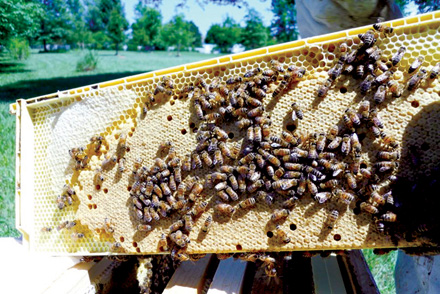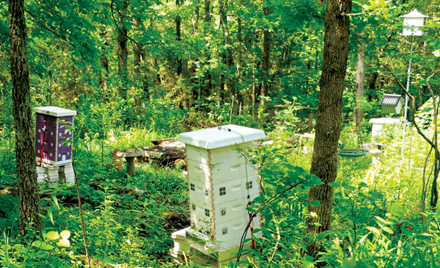Want Bees?

Suggested title: There are five misconceptions people have about keeping honeybees. Although some of these sound similar, each has its own set of unique challenges so I often advise people to go into beekeeping only after giving these much consideration.
1. There is only one way to keep bees. Not only are there several ways to keep bees but how you keep bees depends on the reason why you want to have honeybees. Sometimes the equipment you choose, or the techniques you pursue, are based on how you first learn to keep bees but they may not fit your later needs. Ask questions, be open to new techniques and concepts and understand why someone is taking one approach over another one. The why is sometimes more important than the what.
2. They don’t know why they want to keep bees. There are several reasons to keep bees and for every reason, there are a variety of different techniques you may use. So why do you want honeybees – for pollination, to have honey, to get more bees, for pets? Mine come closer to the latter than most but I started keeping bees for pollination. Extra honey goes to my bees first and my garden is now re-arranged to support their pollen and nectar needs.
It’s important to know that the advice you get on how best to do something depends on why the person giving the advice keeps bees. Ask the person giving you advice, or instruction, keeps bees. Try to match up your interests with those of the person you follow or who mentors you, it will be frustrating to learn how to keep bees for honey production if all you want them to do is pollinate a garden.
3. They want to learn everything they can before they start. Learn the basics – beekeeping terminology and typical monthly beekeeping chore schedule, then lift that hive lid for a closer look and start to get to know your bees, they are the best teachers. And don’t be surprised if they keep changing things, they have a tendency to do that so try to keep up.
4. Try a lot of different equipment. You can but that ends up being expensive and frustrating when you don’t have a special piece you need. Ask to visit a couple of area apiaries and lift a super full of honey to see how much that weighs. That weight may help you decide what kind of hive equipment to pursue. Keep it as simple as you can so you can interchange parts and make sure you know the correct terminology before you order.
5. They look to keep bees on the cheap.
To get into beekeeping, it takes $700-$1,000 and an extra freezer. You won’t get the amount of honey you expect in your first couple of years, either, and honey sales will not be worth the investment you will need to make to be a successful business. Keeping bees has many other benefits but, in general, making money is not one of them.
Charlotte Ekker Wiggins is a beekeeper, gardener and sometimes cook. Published by El Dorado Springs Sun once in print and online with author’s permission. Copyright 2017, all rights reserved. This column may not be reprinted, republished or otherwise distributed without author’s permission. Contact Charlotte at gardeningcharlotte at gmail dot com.
LOTS OF REASONS TO KEEP BEES – Keeping bees is a fascinating, challenging and rewarding pursuit and that has little to do with the sweet honey they make. Honeybees pollinate one third of all of the foods we eat.

SIZE MATTERS – Knowing what size beekeeping equipment to get from the start is a good way to keep costs down. I am currently transitioning to smaller hive sizes so I can more easily move the boxes around. (Photos by Charlotte Ekker Wiggins).



Facebook Comments